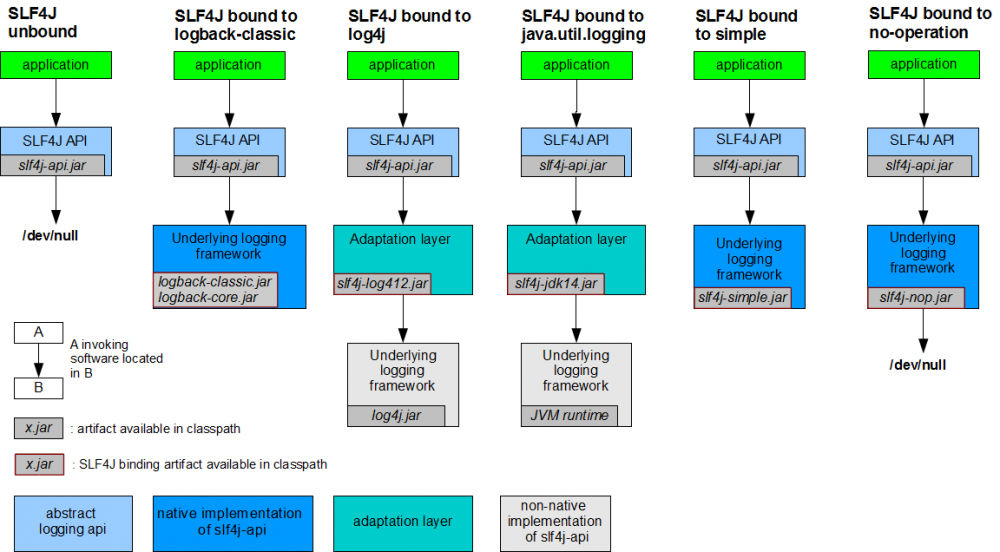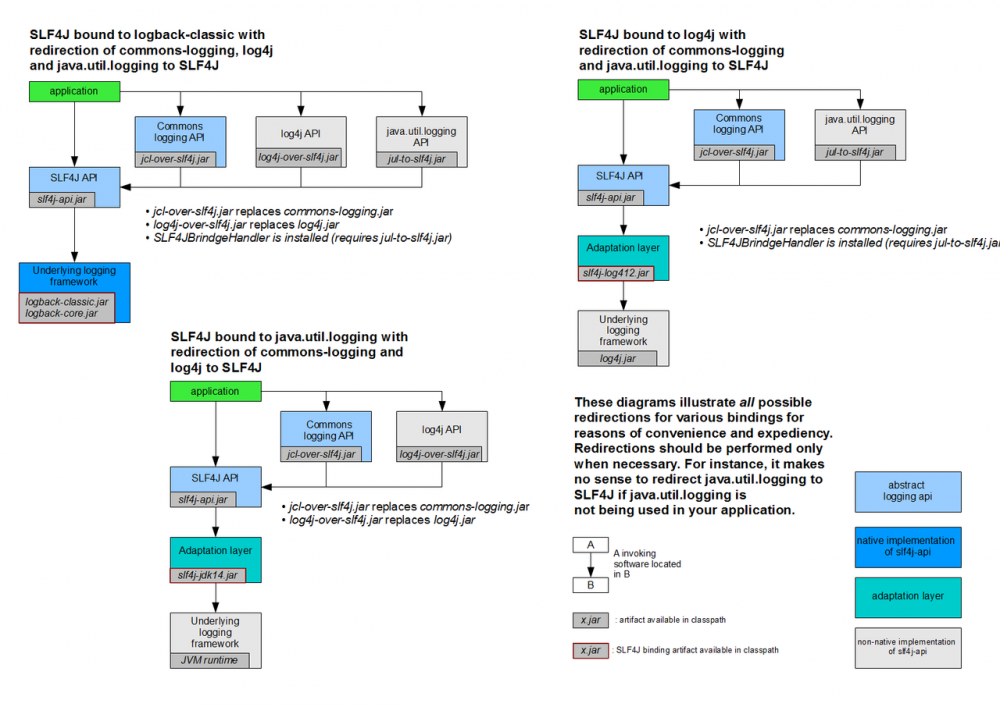spring boot web
-
所有
/webjars/**,都去classpath:/META-INF/resources/webjars/找资源;webjars文件代表以jar包的形式去引入静态资源,具体见webjars; -
webjars使用方式很简单,以jquery引入为例:// pom.xml <!-- 引入jQuery -->在访问的时候只需要写**/webjars/文件夹下面的资源名称即可 <dependency> <groupId></groupId> <artifactId>jquery</artifactId> <version>3.3.1</version> </dependency> // 访问http://localhost:8080/webjars/jquery/3.3.1/jquery.js即可访问到导入静态资源文件夹中的jquery.js文件 复制代码
访问自身的静态资源文件映射
-
所有访问
/**访问当前项目的静态资源(css,img,js等文件),都会去以下路径查找是否含有该文件"classpath:/META-INF/resources/", "classpath:/resources/", "classpath:/static/", // 习惯使用这个 **/src/main/resources/static/ "classpath:/public/", // 习惯使用这个 **/src/main/resource/public/ "/" // 当前项目跟路径 // 访问http://localhost:8080/assets/css/signin.css => 其实是访问/src/main/resource/static/assets/css/signin.css 复制代码
访问首页(欢迎页)文件映射
访问 / 默认显示的页面,也叫欢迎页面,都会去静态资源所在的路径寻找 index.html 文件显示出来
private Optional<Resource> getWelcomePage() {
String[] locations = getResourceLocations(this.resourceProperties.getStaticLocations());
return Arrays.stream(locations).map(this::getIndexHtml).filter(this::isReadable).findFirst();
}
§
private Resource getIndexHtml(String location) {
return this.resourceLoader.getResource(location + "index.html");
}
复制代码
网页tab图标资源映射favicon.ico
访问 /favicon.ico 会直接映射到 classpath:/public|static|resources/favicon.ico
SpringBoot访问数据库数据
classpath:/resources/ 下的application.yml文件中配置数据库连接信息
spring:
datasource:
username: root
password: 123456
url: jdbc:mysql://localhost:3306/jdbc
driver-class-name: com.mysql.cj.jdbc.Driver
// <dependency>
<groupId>mysql</groupId>
<artifactId>mysql-connector-java</artifactId>
<scope>runtime</scope>
</dependency>
mysql驱动类mysql-connector-java版本在6以上,那么 driver-class-name => com.mysql.cj.jdbc.Driver;
mysql驱动类mysql-connector-java版本6以下,那么 driver-class-name => com.mysql.jdbc.Driver;
复制代码
默认数据源:
SpringBoot创建默认DataSource时,规则如下:
- 优先寻找创建Tomcat连接池 // 默认先使用tomcat连接池
- 如果没有Tomcat连接池,会查找创建HikariCP
- 如果没有HikariCP连接池,会查找创建dbcp
- 如果没有dbcp连接池,会查找创建dbcp2
- 可以使用spring.datasource.type属性指定连接池类型数据源spring.datasource.type=org.apache.commons.dbcp.BasicDataSource
参考资料:
-
深入理解Spring Boot数据源与连接池原理
-
SpringBoot 中使用 JDBC Templet
SpringBoot更换数据源-druid数据源(后台监控sql及web请求)
-
引入druid,切换数据源为druid数据源
type: com.alibaba.druid.pool.DruidDataSource // 指定为druid数据源 // 其他属性 #上半区公共部分对应的是 org.springframework.boot.autoconfigure.jdbc.DataSourceProperties 中的属性 #下半区属性对应的是 com.alibaba.druid.pool.DruidDataSource 中的属性,Spring Boot 默认是不注入不了这些属性值的,需要自己绑定 #druid 数据源专有配置 initialSize: 5 minIdle: 5 maxActive: 20 maxWait: 60000 timeBetweenEvictionRunsMillis: 60000 minEvictableIdleTimeMillis: 300000 validationQuery: SELECT 1 FROM DUAL testWhileIdle: true testOnBorrow: false testOnReturn: false poolPreparedStatements: true #配置监控统计拦截的filters,stat:监控统计、log4j:日志记录、wall:防御sql注入 #如果允许时报错 java.lang.ClassNotFoundException: org.apache.log4j.Priority #则导入log4j依赖即可,Maven 地址: https://mvnrepository.com/artifact/log4j/log4j filters: stat,wall,log4j maxPoolPreparedStatementPerConnectionSize: 20 useGlobalDataSourceStat: true connectionProperties: druid.stat.mergeSql=true;druid.stat.slowSqlMillis=500 复制代码
-
配置druid数据源自动装配
// SpringBoot启动类SpringBootDataJdbcApplication的同级文件夹中创建config.DruidConfig.java文件 package com.dyh.www.springbootjdbc.config; import com.alibaba.druid.pool.DruidDataSource; import com.alibaba.druid.support.http.StatViewServlet; import com.alibaba.druid.support.http.WebStatFilter; import org.springframework.boot.context.properties.ConfigurationProperties; import org.springframework.boot.web.servlet.FilterRegistrationBean; import org.springframework.boot.web.servlet.ServletRegistrationBean; import org.springframework.context.annotation.Bean; import org.springframework.context.annotation.Configuration; import javax.sql.DataSource; import java.util.Arrays; import java.util.HashMap; import java.util.Map; @Configuration public class DruidConfig { @ConfigurationProperties(prefix = "spring.datasource") @Bean public DataSource druidDataSource() { return new DruidDataSource(); } // 配置druid的监控 // 配置一个管理后台的servlet @Bean public ServletRegistrationBean statViewServlet() { ServletRegistrationBean bean = new ServletRegistrationBean(new StatViewServlet(), "/druid/*"); Map<String, String> initParams = new HashMap<>(); initParams.put("loginUsername", "admin"); initParams.put("loginPassword", "123456"); initParams.put("allow", ""); initParams.put("deny", ""); bean.setInitParameters(initParams); return bean; } // 配置一个web监控的拦截filter @Bean public FilterRegistrationBean webStatFilter() { FilterRegistrationBean bean = new FilterRegistrationBean(); bean.setFilter(new WebStatFilter()); Map<String, String> initParams = new HashMap<>(); initParams.put("exclusions", "*.js, *.css, /druid/*"); // 静态资源js,css文件不拦截过滤 bean.setInitParameters(initParams); bean.setUrlPatterns(Arrays.asList("/*")); return bean; } } 复制代码
SpringBoot整合mybatis
<dependency> <groupId>org.mybatis.spring.boot</groupId> <artifactId>mybatis-spring-boot-starter</artifactId> <version>2.0.1</version> </dependency> 复制代码
注解版
// 这是操作数据库的mapper
@Mapper // 数据库与数据模型的映射注解,如果这里没有,则需要在SpringBootApplication启动类上添加扫描全局mapper的注解,并指定相应的扫描路径
public interface DepartmentMapper {
// 数据库的增删改查sql接口数据映射
@Select("select * from department")
public List<Department> getDepartmentList();
@Select("select * from department where id=#{id}")
public Department getDepartmentById(Integer id);
@Delete("delete from department where id=#{id}")
public int deleteDepartmentById(Integer id);
@Options(useGeneratedKeys = true, keyProperty = "id") // 指定主键
@Insert("insert into department(departmentName) values(#{departmentName})")
public int insertDepartment(Department department);
@Update("update department set departmentName=#{departmentName} where id=#{id}")
public int updateDepartment(Department department);
}
// 这里的 departmentName 对应数据库的 departmentName 字段
// 如果这里的 department_name 相对应数据库的 departmentName 字段 转换成驼峰命名方式,则可以增加转换的自动配置
复制代码
import com.dyh.springbootmybatis.bean.Department;
import com.dyh.springbootmybatis.mapper.DepartmentMapper;
import org.springframework.beans.factory.annotation.Autowired;
import org.springframework.web.bind.annotation.*;
import java.util.List;
// web API接口
@RestController
public class DepartmentController {
@Autowired
DepartmentMapper departmentMapper;
@RequestMapping(value = "/dept/{id}", method=RequestMethod.GET)
public Department getDepartmentById(@PathVariable("id") Integer id) {
return departmentMapper.getDepartmentById(id);
}
@RequestMapping(value = "/dept/list", method=RequestMethod.GET)
public List<Department> getDepartmentList() {
return departmentMapper.getDepartmentList();
}
@RequestMapping(value = "/dept", method = RequestMethod.GET)
public Department insertDepartment(Department department) {
departmentMapper.insertDepartment(department);
return department;
}
}
复制代码
-
转换的自动配置
在config/文件夹下创建自定义mybatis的映射规则, 给Spring容器添加一个ConfigurationCustomizer组件即可
@org.springframework.context.annotation.Configuration // 表明这是一个自动配置类 public class MybatisConfig { @Bean // 表明这是一个Spring容器组件 public ConfigurationCustomizer configurationCustomizer() { return new ConfigurationCustomizer() { @Override public void customize(Configuration configuration) { configuration.setMapUnderscoreToCamelCase(true); } }; } } 复制代码 -
使用
MapperScan批量扫描mapper文件@MapperScan(value = "com.dyh.springbootmybatis.mapper") // 这里批量扫描mapper文件,并且使用value指定路径 @SpringBootApplication public class SpringBootMybatisApplication { public static void main(String[] args) { SpringApplication.run(SpringBootMybatisApplication.class, args); } } 复制代码
配置版
-
以Employee对象为例,首先定义数据实体类,与数据库表字段一一对应
public class Employee { private Integer id; private String lastName; private String email; private Integer gender; private Integer departmentId; public Integer getId() { return id; } public void setId(Integer id) { this.id = id; } public String getLastName() { return lastName; } public void setLastName(String lastName) { this.lastName = lastName; } public String getEmail() { return email; } public void setEmail(String email) { this.email = email; } public Integer getGender() { return gender; } public void setGender(Integer gender) { this.gender = gender; } public Integer getDepartmentId() { return departmentId; } public void setDepartmentId(Integer departmentId) { this.departmentId = departmentId; } } 复制代码 -
建立操作数据库表接口的mapper,并统一在SpringBoot的主配置类中配置扫描mapper的
import com.dyh.springbootmybatis.bean.Employee; import java.util.List; // API接口 public interface EmployeeMapper { public Employee getEmployeeById(Integer id); public List<Employee> getEmployeeList(); public Integer deleteEmployeeById(Integer id); } 复制代码 -
配置接口mapper与数据库表操作对应的sql语句xml文件
-
配置application.yml文件指定xml文件所在路径
# 引入mybatis配置版文件 mybatis: config-location: classpath:config/mybatis-config/global.xml mapper-locations: classpath:config/mybatis-config/mapper/*.xml 复制代码
-
配置全局mybatis的配置文件xml
<!-- global.xml文件 --> <?xml version="1.0" encoding="UTF-8" ?> <!DOCTYPE configuration PUBLIC "-//mybatis.org//DTD Config 3.0//EN" "http://mybatis.org/dtd/mybatis-3-config.dtd"> <configuration> <settings> <setting name="mapUnderscoreToCamelCase" value="true"/> </settings> </configuration> 复制代码 -
配置mybatis操作数据库表的sql语句,与接口API的方法行成映射,具体配置见文档
<!-- Employee.xml --> <!-- 接口API映射配置文件 --> <?xml version="1.0" encoding="UTF-8" ?> <!DOCTYPE mapper PUBLIC "-//mybatis.org//DTD Mapper 3.0//EN" "http://mybatis.org/dtd/mybatis-3-mapper.dtd"> <mapper namespace="com.dyh.springbootmybatis.mapper.EmployeeMapper"> <!-- 唯一标识记号id值为API接口的对应方法 --> <select id="getEmployeeById" resultMap="employeeMap"> select * from employee where id = #{id} </select> <select id="getEmployeeList" resultMap="employeeMap"> select * from employee </select> <delete id="deleteEmployeeById"> delete from employee where id = #{id} </delete> <resultMap id="employeeMap" type="com.dyh.springbootmybatis.bean.Employee"> <!-- 数据库表列字段与实体类的实例属性映射规则 --> <id property="id" column="id" /> <result property="lastName" column="lastName"/> <result property="gender" column="gender"/> <result property="email" column="email"/> <result property="departmentId" column="departmentId"/> </resultMap> </mapper> 复制代码
-
SpringBoot整合Jpa
目的
JPA是作为Spring Data一部分,用于简化数据库的curd和分页列表获取等数据操作的持久化框架,通过配置继承封装好数据操作的接口,为我们提供统一的API。
SpringBoot通过配置整合Jpa
JPA(ORM): Object Relational Mapping
-
编写一个实体类(entity.User),将数据表的字段和实体类的字段进行映射,同时配置好映射规则(主键、自增、别名等)
import javax.persistence.*; // 使用JPA注解配置映射关系 @JsonIgnoreProperties(value = { "hibernateLazyInitializer", "handler" }) // 标记不生成json对象的属性 @Entity @Table(name = "tbl_user") // @Table指定该实体类的数据跟哪个数据表对应,如果省略,默认数据库表名为该类名小写user public class User { @Id // 这是一个主键 @GeneratedValue(strategy = GenerationType.IDENTITY) private Integer id; @Column(name = "last_name", length = 50) // 代表这是和数据库表对应的一个列 private String lastName; @Column // 省略则默认列名就是属性名 private String email; public Integer getId() { return id; } public void setId(Integer id) { this.id = id; } public String getLastName() { return lastName; } public void setLastName(String lastName) { this.lastName = lastName; } public String getEmail() { return email; } public void setEmail(String email) { this.email = email; } } 复制代码 -
编写一个Dao接口来操作实体类对应的数据表,称为Repository,包含常见数据的增删改查,分页等操作
import com.dyh.springbootjpa.entity.User; import org.springframework.data.jpa.repository.JpaRepository; // 继承JpaRepository来继承对数据的操作接口 public interface UserRepository extends JpaRepository<User, Integer> { } 复制代码 -
application.yml基本配置
# jpa关于sql相关配置 spring: jpa: hibernate: # 更新或创建数据表 ddl-auto: update # 在每次执行sql语句时打印出执行的sql语句 show-sql: true 复制代码 -
接口文件
import com.dyh.springbootjpa.entity.User; import com.dyh.springbootjpa.repostitoy.UserRepository; import org.springframework.beans.factory.annotation.Autowired; import org.springframework.web.bind.annotation.PathVariable; import org.springframework.web.bind.annotation.RequestMapping; import org.springframework.web.bind.annotation.RequestMethod; import org.springframework.web.bind.annotation.RestController; import java.util.List; @RestController public class UserController { @Autowired UserRepository userRepository; @RequestMapping(value = "/user/{id}", method = RequestMethod.GET) public User getUserById(@PathVariable("id") Integer id) { User user = userRepository.getOne(id); return user; } @RequestMapping(value = "/user/save", method = RequestMethod.GET) public User insertUser(User user) { User newUser = userRepository.save(user); return newUser; } @RequestMapping(value = "/user/all", method = RequestMethod.GET) public List<User> getUserList() { List<User> userList = userRepository.findAll(); return userList; } @RequestMapping(value = "/user/test", method = RequestMethod.GET) public String userTest() { long count = userRepository.count(); return "success:" + count; } } 复制代码
SpringBoot与日志
日志介绍
SpringBoot底层是Spring框架, Spring框架默认使用JCL作为日志抽象层;
SpringBoot选用SLF4作为日志抽象层,logback作为日志实现层;
-
Jul - Java util logging
java.util.logging包下面的一款日志框架,属于JDK自带的日志实现;
-
Log4j
Apache的一个开源项目,可以不需要依赖第三方技术,直接记录日志;
-
Log4j2
log4j2和log4j是同一个作者开发,只不过log4j2是重新架构的一款日志组件,抛弃了log4j的不足,以及吸取了优秀的logback的设计重新推出的一款新组件;
-
Jcl - Jakarta Commons Logging
jcl是apache公司开发的一个 抽象日志通用框架 ,本身不实现日志记录,但是提供了记录日志的抽象接口方法(info,debug,error…)。jcl默认使用jul打印日志,如果项目依赖了log4j jar包,则使用log4j打印日志;
-
Logback
Logback是由log4j创始人设计的一个开源日志组件。LogBack被分为3个组件,logback-core, logback-classic 和 logback-access;
-
Slf4j - Simple Logging Facade for Java
Java的简单日志门面(SLF4J)用作 各种日志框架的简单门面或抽象 ,像jul、logback和log4j等。SLF4J允许最终用户在部署时插入所需的日志框架,如果在项目中使用slf4j必须加一个依赖jar,即slf4j-api-xxx.jar。slf4j本身不记录日志,通过绑定器绑定一个具体的日志框架来完成日志记录。
日志抽象层 日志实现层 Jcl、Slf4j、Jboss-logging Log4j、 Jul、Log4j2、Logback
SLF4j的使用
日志记录方法的调用,不应该直接调用日志的实现类,而是应该调用日志抽象层里面的方法。

日志统一的冲突解决方法(日志框架适配图)
自己的应用(slf4j+logback), spring(commons-logging), Hibernate(jboss-logging), Mybatis各框架都使用了不同的日志框架,如何统一日志记录,使得所有的框架都使用slf4j输出日志,这是需要解决的问题。
将系统中其他日志框架先排除掉,
用中间包替换掉原有被排除的日志框架
再导入slf4j实现统一的日志输出

SpringBoot使用的日志框架
底层依赖的日志框架
<dependency> <groupId>org.springframework.boot</groupId> <artifactId>spring-boot-starter-logging</artifactId> <version>2.1.6.RELEASE</version> <scope>compile</scope> </dependency> 复制代码
依赖关系

总结:
SpringBoot使用slf4j+logback方式进行日志记录;
SpringBoot也把其他日志换成了slf4j;
引入其他日志框架,必须把本框架下的默认依赖的日志框架移除掉(如果有的话);
// 低版本的Spring-core移除commons-logging日志框架
// 高版本的Spring-core默认不集成commons-logging日志框架
<dependency>
<groupId>org.springframework.boot</groupId>
<artifactId>spring-boot-starter-logging</artifactId>
</dependency>
<dependency>
<groupId>org.springframework</groupId>
<artifactId>spring-core</artifactId>
<exclusions>
<exclusion>
<groupId>commons-logging</groupId>
<artifactId>commons-logging</artifactId>
</exclusion>
</exclusions>
</dependency>
复制代码
如何在SpringBoot中使用日志
-
日志级别
Logger logger = LoggerFactory.getLogger(SpringbootLoggingApplication.class); // 日志的级别 // 由低到高 trace < debug < info < warn < error // 在配置文件中可以调整输出的日志级别,日志就会在该级别及以上的高级别生效输出日志 logger.trace("这是trace信息..."); logger.debug("这是debug信息..."); // 本版本的SpringBoot默认输出info级别及以上的日志, 配置文件中没有指定级别的话默认使用info级别,也叫root级别 - logging.level.root logger.info("这是info信息..."); logger.warn("这是warn信息..."); logger.error("这是error信息..."); 复制代码 -
日志输出配置文件—
application.properties# application.properties #日志输出级别 logging.level.com.dyh = trace # 日志输出路径 logging.path=/Users/dyh/IdeaProjects/mvn/springboot-logging # 日志输出至文件名, 当然可以直接指定带路径的文件名,这样日志输出路径可不指定 logging.file=springboot-logging.log # 控制台输出日志的格式 logging.pattern.console=%d{yyyy-MM-dd HH:mm:ss} [%thread] %-5level %logger{50} - %msg%n # 文件中输出日志的格式 logging.pattern.file=%d{yyyy-MM-dd HH:mm:ss.SSS} === [%thread] %-5level === %logger{50} === %msg%n 复制代码 -
日志输出格式说明
-
%clr(%5p) 表示输出日志的颜色(根据日志级别)
-
%d 表示日期时间
-
%thread 表示线程名
-
%-5level 表示日志级别level向左对齐显示五个字符宽度
-
%logger{50} 表示日志名字logger最长50个字符(日志所在的包名),否则按句点分割
-
%msg 日志输出消息
-
%n 换行符
-
-
日志输出配置文件—
logback.xml || logback-spring.xml虽然application.properties能进行日志的配置,但是为了更方便、独立地配置日志,我们一般使用单独的日志配置文件来进行日志配置,如下:
Logging System Customization Logback logback-spring.xml,logback-spring.groovy,logback.xml, orlogback.groovyLog4j2 log4j2-spring.xmlorlog4j2.xmlJDK (Java Util Logging) logging.propertiesSpringBoot应用会默认识别logback.xml文件作为日志的配置文件,但是在logback.xml中无法使用SpringBoot配置的高级功能,如spring.profiles.active=dev, 即在不同环境中使用不同的日志配置文件,因此一般使用logback-spring.xml作为指定的日志配置文件<!-- logback-spring.xml --> <?xml version="1.0" encoding="UTF-8"?> <configuration debug="false"> <!--自定义属性,可以在之后使用;定义日志文件的存储地址 勿在LogBack的配置中使用相对路径--> <property name="LOG_HOME" value="/Users/dyh/IdeaProjects/mvn/springboot-logging" /> <!-- 控制台输出 --> <appender name="STDOUT" class="ch.qos.logback.core.ConsoleAppender"> <encoder class="ch.qos.logback.classic.encoder.PatternLayoutEncoder"> <!--格式化输出:%d表示日期,%thread表示线程名,%-5level:级别从左显示5个字符宽度%msg:日志消息,%n是换行符, %yellow() 定义某个输出信息的颜色--> <pattern>%yellow(%d{yyyy-MM-dd HH:mm:ss.SSS}) %highlight([%thread] %-5level) %green(%logger{50}) - %cyan(%msg%n)</pattern> </encoder> </appender> <!-- 按照每天生成日志文件 --> <appender name="FILE" class="ch.qos.logback.core.rolling.RollingFileAppender"> <rollingPolicy class="ch.qos.logback.core.rolling.TimeBasedRollingPolicy"> <!--日志文件输出的文件名--> <FileNamePattern>${LOG_HOME}/TestWeb-%d{yyyy-MM-dd}.log</FileNamePattern> <!--日志文件保留天数--> <MaxHistory>30</MaxHistory> </rollingPolicy> <encoder class="ch.qos.logback.classic.encoder.PatternLayoutEncoder"> <!--格式化输出:%d表示日期,%thread表示线程名,%-5level:级别从左显示5个字符宽度%msg:日志消息,%n是换行符--> <pattern>%d{yyyy-MM-dd HH:mm:ss.SSS} [%thread] %-5level %logger{50} - %msg%n</pattern> </encoder> <!--日志文件最大的大小--> <triggeringPolicy class="ch.qos.logback.core.rolling.SizeBasedTriggeringPolicy"> <MaxFileSize>10MB</MaxFileSize> </triggeringPolicy> </appender> <!-- 日志输出级别 --> <!--根据不同的环境输出不同级别的日志信息--> <springProfile name="dev"> <!-- 在application.properties文件中指定 spring.profiles.active=dev --> <root level="DEBUG"> <appender-ref ref="STDOUT" /> </root> </springProfile> <springProfile name="prod"> <!-- 在application.properties文件中指定 spring.profiles.active=prod --> <root level="WARN"> <appender-ref ref="STDOUT" /> </root> </springProfile> </configuration> 复制代码切换日志框架
按照日志适配图进行切换即可
- 本文标签: XML IO mail 线程 总结 Statement IDE 统计 App Persistence classpath REST 模型 https log4j2 map Connection API ACE java json mapper pom 数据库 开发 JDBC 数据 core CTO Logging root list springboot tomcat Logback sql dataSource 管理 Word spring 实例 ORM maven 解决方法 连接池 find UI entity 创始人 trigger web value Spring Boot servlet apr DBCP druid 开源项目 http mysql Select bean db 分页 HashMap tar jquery src 时间 JPA apache key id cat 开源 stream CSS DDL HTML Property tab mybatis bug js 部署 配置 lib 代码 数据模型 update
- 版权声明: 本文为互联网转载文章,出处已在文章中说明(部分除外)。如果侵权,请联系本站长删除,谢谢。
- 本文海报: 生成海报一 生成海报二










![[HBLOG]公众号](https://www.liuhaihua.cn/img/qrcode_gzh.jpg)

